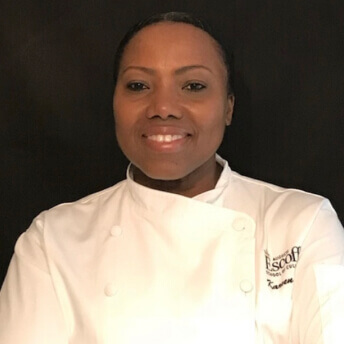The life of a personal chef is, in many ways, like any “creative”: long hours spent alone in your own space, trying out new ideas, and doing a lot of research.
In that respect, it can be difficult for some people to shift gears away from the confines of a kitchen and into marketing mode. Yet self-promotion is exactly what’s needed to bring in new clients.
The good news? If you like being creative and you like serving others—two key components in the personal chef business—you can use those skills to your advantage when marketing your business.
The Most Important Question: Who Would You Love To Cook For?
First, it’s important to note the distinction between a personal chef and private chef. A personal chef is self-employed and prepares meals for different clients throughout the week. These are often pre-made meals that the clients can then heat-and-eat. A private chef works for a single client or family, tends to all their culinary needs, and is considered an employee. They may travel with the client and some even live in the client’s house.

Personal chefs are self-employed individuals who prepare meals for several clients throughout the week
Because a personal chef will work with a variety of clients, it’s important to spend time thinking about who your ideal clients are. Here are a handful of potential scenarios:
- Busy professionals who don’t have time to cook
- A family that is rushing from one activity to another and needs help getting healthy meals assembled
- People with special dietary needs who could use a professional’s assistance making sure their meals include the right ingredients
- Foodies who want to try different cuisines
Be sure to consider personality types and who you would enjoy working with, plus the budgets of potential clients. You’re running a business, so it’s important to understand your expenses and then determine the demographic that can invest in your services.
This exercise, often referred to as a positioning statement, gives you a foundation for what your business will look like. That vision guides your marketing as you tailor your message to speak to that ideal client.
From here, you can expand into a formal business plan, which should include the building blocks of your personal brand. The business plan will include a marketing analysis, a sample menu, cost analysis, any staff needs, financing needs, and profit projections to identify your estimated return on investment.
Polish Your Portfolio
Time to burnish your credentials. If you don’t already have one, create a culinary portfolio.
A portfolio is more detailed and visual than a standard resume. It includes traditional resume information like education, experience, and contact information, but also contains a lot more visual components. You’ll sprinkle photos throughout a portfolio, showcasing your dishes as well as you at work. A portfolio will also include sample menus and a section for you to describe the services you offer.
By going through the process of organizing this information first, you’ll have all the relevant information needed to build out your marketing plan. You might even cross-post the info, like using the About Me section of your portfolio on your website’s About Me page.
Create an Online Presence
Speaking of websites, it’s important to have at least a basic website with your contact information and services. People primarily search online, and the lack of a website can hurt you if they can’t find you, or if they deem your business unprofessional because it doesn’t have one.
According to a 2023 survey by BrightLocal, 87 percent of people used Google to evaluate local businesses in 2022. Service businesses ranked among the top three industries for which customers saw business reviews as most important.
Should you include pricing on your website? That depends…
Reasons to include pricing:
- Helps you stand out from chefs who don’t list prices
- Eliminates conversations with people who can’t afford your services
- If you’re flexible, prices create a controlled starting point for negotiation
Reasons to exclude prices:
- You need more flexibility to cover costs for different clients
- You prefer to gauge a client’s potential budget and utilize a sliding scale
- You want to avoid attracting clients with tight, inflexible budgets
After the basics, consider social media, using whichever sites you’re most comfortable with. A personal chef business is a natural fit for a platform that highlights photos and videos; you might even supplement your personal chef income by becoming a food influencer.
The types of content you might feature: behind the scenes, cooking tutorials, timely and/or favorite recipes.
As for online advertising, consider holding off at first. Until you know exactly what you’re marketing and the right search terms to use, you could be throwing money away. Many businesses have spent big bucks on online ads and saw little-to-no return because they didn’t know what they needed.
Finally, in all of these scenarios, be sure to show your face regularly; potential clients want to see who they’re hiring.
Hone Your Elevator Pitch and Your Interview Skills
Your elevator pitch doesn’t need to be a source of anxiety the way a job interview might be. You’re still a business owner. But the same skills you use in an interview could come in handy when talking with potential clients.
Whether you find people via help wanted ads, scan a listing service, or have people come to you, all of them will have questions. You can research the types of questions potential clients typically ask before hiring a personal chef and practice answering them at home in front of a mirror, or role-play with friends and family.
Expect questions about why you wanted to become a personal chef, about your education and experience, and about your culinary approach as well as how you work with clients.
An elevator pitch is different from an interview. This is the kind of short reply you’ll give when someone at a party or networking event asks what you do. The term refers to the amount of time you might spend with someone in an elevator—think 30 seconds or so. Although a lot of people dread the elevator pitch, if you’ve done your work thinking about your ideal client and your branding, this should come fairly easily.
Above all, be yourself in all of the above scenarios. Remember: you’re looking for a good match, too. You want to work with clients you enjoy, and any interview or pitch is also a chance for you to evaluate whether you and the potential client are a good fit.

Personal chefs might use videos in their marketing to offer behind-the-scenes looks or do cooking demonstrations.
Hang Out With Like-Minded People
Whether in-person or online, networking typically includes a two-pronged approach: join relevant professional organizations, and go to the places your prospective clients might hang out.
Some examples of organizations include the United States Personal Chef Association, the American Personal & Private Chef Association, hireachef.com (a personal chef directory), and the Escoffier GLEAM network, a nonprofit, volunteer network of restaurant and foodservice professionals offering exciting mentorship programs to other industry professionals. These groups often offer networking opportunities, “find a chef” directories to help potential clients find chefs, and special rates for liability insurance.
As for places your potential clients might hang out? This is where all that work you did in the beginning to visualize your business and your ideal client comes into play. You should have an understanding of where they work and relax, which will lead you to them.
You might head to food events and competitions, or look for partnership opportunities with places like wineries, event venues, and local grocers. Consider networking with personal trainers, whose clients might overlap with yours; you might even partner with a trainer to offer a type of finders fee or commission for referring people who sign up for your services.
Create Some Buzz in Online and Local Media
In addition to tooting your own horn on your website and social media, it can be helpful to generate some third-party buzz and get mentioned in other types of media.
You might reach out to local media to propose a feature story, to food bloggers and influencers whose audience might include potential clients; one shoutout from someone with a large following could be all you need to kickstart your business—but don’t rely just on this, of course.

Partnering with local media outlets can help highlight your personal story and attract new clients.
When starting out, you might be tempted to go for the biggest audience and want to pitch an outlet like the New York Times. You’ve got much better chances with a local weekly newspaper, however, which is always looking for stories as well as local businesses to feature. Because it’s local, it’s more likely to reach your ideal client, too.
Consider pitching a local daily newspaper’s Business section, which sometimes features new businesses. Get the reporter’s attention by finding a few interesting tidbits about you and your business that might catch their eye.
You can also create buzz in other ways, like offering cooking classes that could be promoted in your city or town. Escoffier grad Shane Witters Hicks is a great example of someone who started a successful personal chef business and offers personalized cooking classes.
Pay attention to online reviews on places like Yelp and other forums, and consider responding to client comments, even with a simple thank-you. Be tactful when responding to any criticism, mindful of how potential clients may judge your replies.
Keep local charities in mind as well. You can build some community goodwill and do good with your business by offering your services to a family with a sick child, a local homeless shelter or soup kitchen, or by cooking for a fundraising event.
Ready to Market Your Personal Chef Business?
Business ownership can be an exciting and fulfilling ride, and the marketing side of things can offer you as many outlets for creativity as the business itself. It helps to know what you’re doing.
Students enrolled in Escoffier’s Food Entrepreneurship program can take a dive into core business concepts, as well as best marketing and promotion practices, to support future aspirations.
When you’re ready to commit to a culinary education and all of the valuable experiences that can come with it, reach out to our team to get started with your application.
TO FIND OUT MORE ABOUT CULINARY ENTREPRENEURSHIP, EXPLORE THESE ARTICLES:
- The Ultimate Guide to Starting a Home-Based Catering Business
- How to Start a Food Business From Home
- 8 Career Paths if You Want to Be a Food Entrepreneur
*Information may not reflect every student’s experience. Results and outcomes may be based on several factors, such as geographical region or previous experience.


